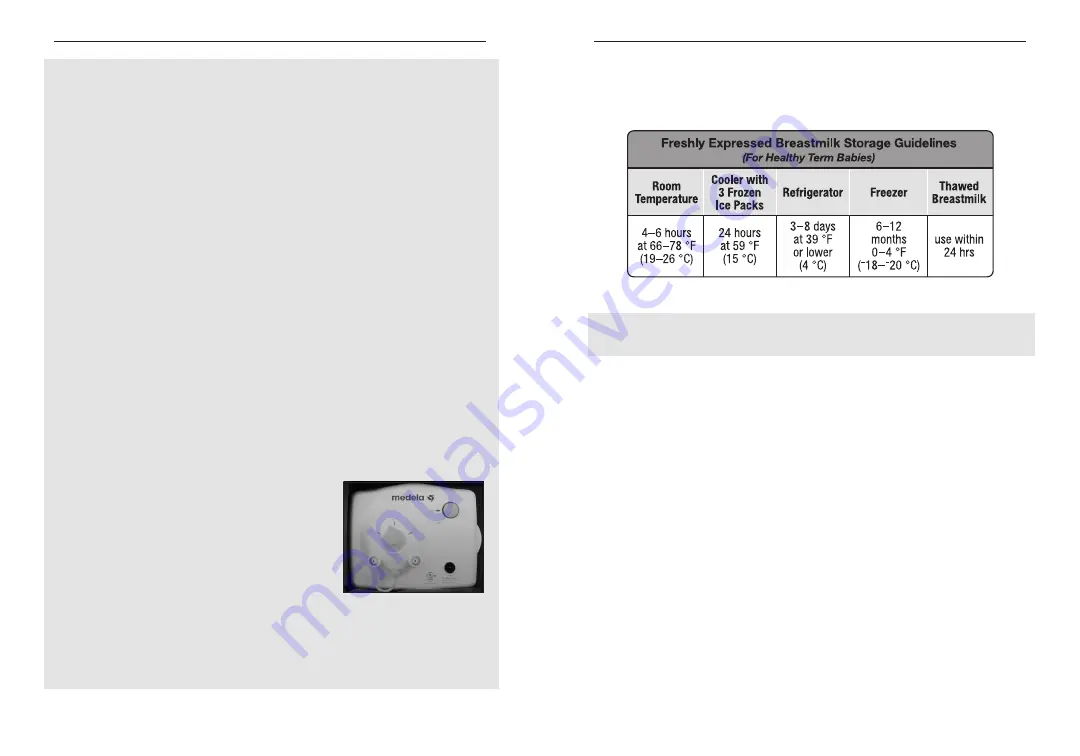
6
Tubing Care
Inspect tubing after each pumping session for condensation and/or milk. It
is not necessary to clean tubing after every use.
Condensation Appears in Tubing:
To eliminate condensation after you have completed pumping, continue
running the pump with the tubing(s) attached for another 1-2 minutes
or until dry.
Overflow:
Milk in tubing:
1. Turn off the pump and unplug from power source.
2. Remove and disassemble the tubing. Wash in soapy water, then
rinse in cold clear water.
3. Attach tubings to pump and run pump 2 minutes or until dry, or
pour a small amount of isopropyl alcohol through the tubings to dry.
(Tubing can be cleaned using a Quick Clean
™
Micro-Steam
™
bag.
Make sure tubing is fully immersed in water inside of bag).
Milk accidentally gets behind the Diaphragm Cap:
1. Turn off the pump and unplug from power source.
2. Remove and disassemble the tubing.
3. Snap off the diaphragm cap using
thumb tab.
4. Be sure the yellow plug is not plugged
into any ports prior to cleaning. Wash the
diaphragm cap in soapy water, then rinse
in cold, clear water.
5. Use a damp (not wet) cloth to wipe the diaphragm and bag. Do not
immerse the motor unit or any of the bags in water.
6. When components are completely dry, reassemble breastpump
and kit.
Storing Breastmilk
Check with your hospital or healthcare provider for specific
storage instructions, if needed.
Storing and Handling Breastmilk
•
Wash hands before pumping milk, touching clean bottles and kit
parts. Avoid touching the inside of bottles and lids.
•
Use clean pump kit and bottles every time you pump.
•
Pumped milk can be stored in a bottle with a solid lid or a
disposable breastmilk storage bag.
•
If you do not use your pumped milk within a few hours, label bottles
with the date the milk was pumped and refrigerate or freeze it.
•
When freezing your milk, only fill containers up to ¾ full because
milk expands with freezing.
•
Chill your freshly expressed milk before adding it to already
frozen milk.
•
If you need to transport your breastmilk, like to the baby’s caregiver,
use a cooler with three (3) frozen ice packs. This will help keep your
milk cold until you reach your destination. Refer to Breastmilk
Storage Guidelines above.
Important Note:
If the temperature in the room, car or outdoors
exceeds 77 °F / 25 °C, chill milk immediately to preserve freshness.
References:
www.BreastmilkGuidelines.com
7
Summary of Contents for 57018W
Page 18: ...32 33...




















